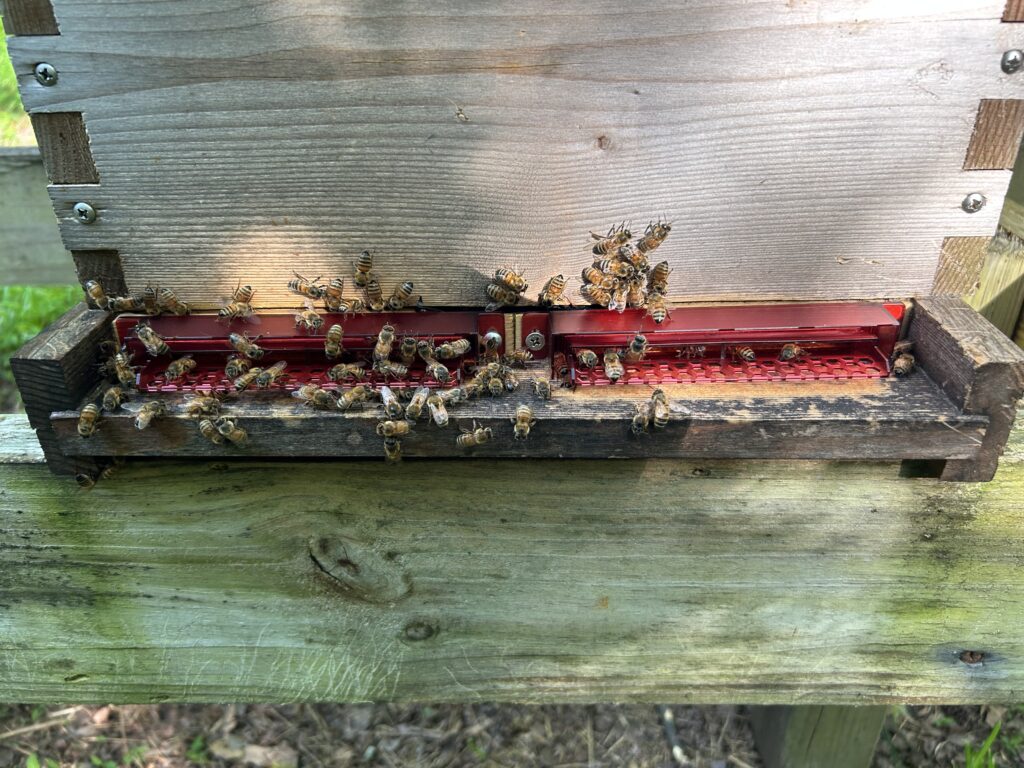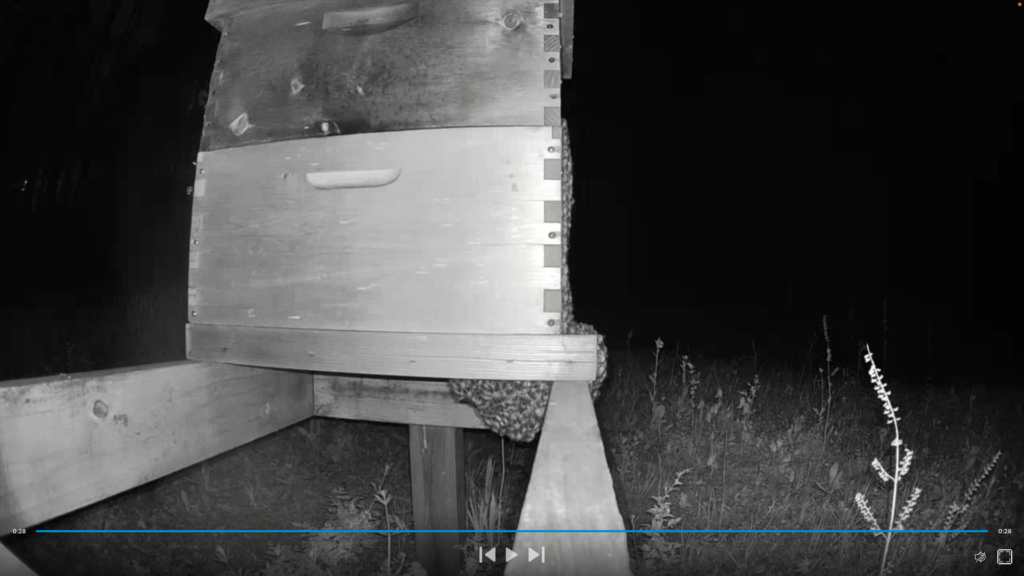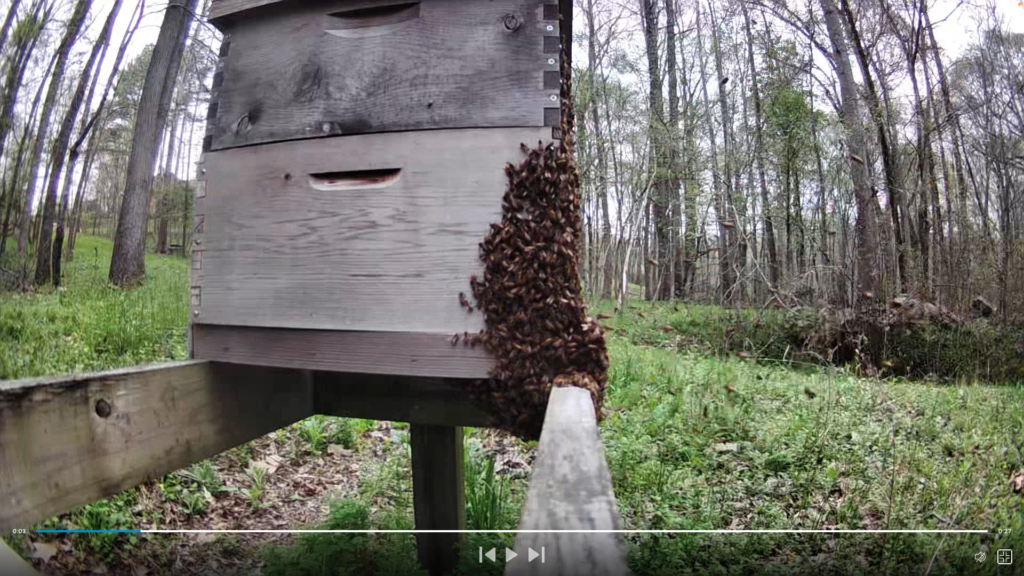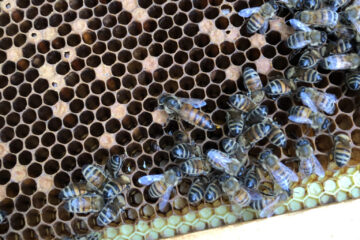When I began this blog, it was my intention to include articles about beekeeping. It’s been a few months so I figure it’s about time.
Two things happen when you start talking beekeeping. First, you can end up monologuing non-stop for much longer than anyone should talk about anything without taking a breath. It’s just that there’s so much that’s interesting, and if you ask you’ll get an answer. Second, you discover just how many people’s parents or grandparents or uncles or neighbors or friends had hives. I had no idea.
So, it seems likely that some of you reading this have bees. Hopefully this article will be of some practical use to you.
We’ve kept bees in the woods behind our house for several years now. Between one and four hives at a time. A perennial challenge has been small hive beetle (SHB) infestations.
Do you remember those candy button strips you could buy by the inch at the bulk food store at the shopping mall? Small hive beetles look like little nasty black crawling dots. Once in a hive, they crawl from cell to cell feeding on honey, pollen, eggs, and brood. They then lay their own eggs in the comb and another generation emerges. The bees try to chase them out, but it’s like herding cats.
I hate small hive beetles. So, too, apparently do the bees.
Despite efforts to prevent and eliminate small have beetles, they keep moving in. Eventually, the bees get fed up with having to deal with them and they just fly away leaving an empty hive. No dead bees. Just no bees.
We’ve tried the Beetle Baffle, Beetle Blasters, Swiffer sheets, nematodes, and scraping the ground under the hives down to the hard dirt then spreading diatomaceous earth. Nothing worked. Until now. (I’m going to end up sounding like an infomercial.)
This spring I ran across something called the Guardian bee hive entrance.
I didn’t know if it would work any better than any of my previous attempts, but I was certainly willing to try. It attaches to the front of an entrance reducer, and works in three ways. First, its red color apparently detours small hive beetles. Second, the overhang requires that the bees hover before landing and entering. Since small hive beetles can only fly in a straight line it’s hard for them to hit the target. Third, those that do make it onto the entrance drop through the holes. A few will get through the gauntlet into the hive, but can be more easily repelled by the guard bees.

I tried it on a hive that had successfully overwintered. A significant number of SHBs were already crawling around inside at the first spring check-up. So, I attached a Guardian entrance to a wooden entrance reducer and slid it into place. The bees were a little bit confused at first but had it figured out within a few minutes.
I went back a week later and the hive was significantly stronger and very few SHBs remained. Many, many more bees. So many that the hive was getting overcrowded. I tried adding more space, but it was too late. They had already made swarm cells which means that half the colony was preparing to leave. Once they decide to leave there’s little you can do about it.
This is what it looks like just before a swarm.


I was out of town and by the time I returned the hive had a more comfortable population, but still doing very well.
We now have three hives, with two Guardian entrances on each. I checked on them today and did not see any small hive beetles. One never wants to declare success too quickly, but this has been the most effective beetle control that I’ve tried. Fingers crossed that we won’t have any more disappearing hives. I’ll let you know how it goes.
